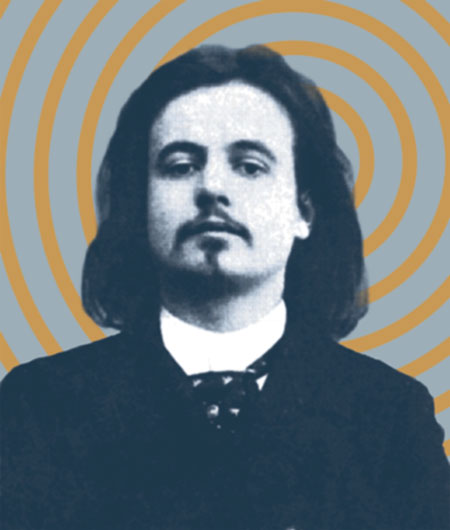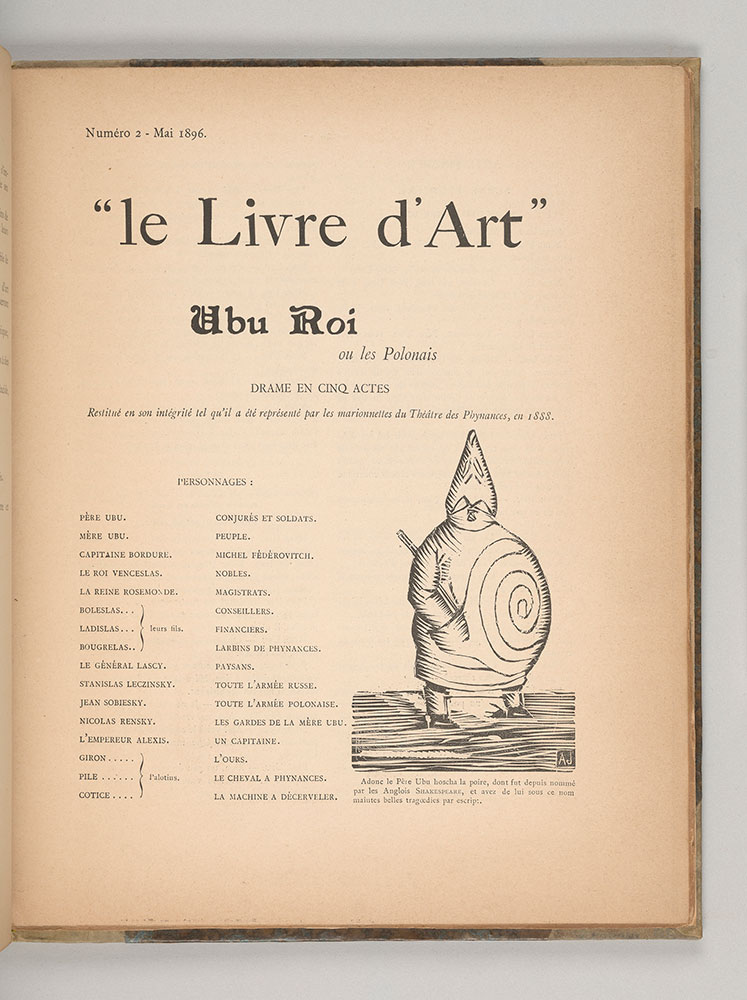ART REVIEW: "Alfred Jarry: The Carnival of Being" “Alfred Jarry: The Carnival of Being” at the Morgan Library and Museum in New York City explores the role of Jarry in the radical upheaval in the arts at the turn of the 20th century in France. Using manuscripts, drawings, photographs and ephemera from the Morgan's own collection as well as items on loan from other collections, it focuses on Jarry's engagement with printed matter and the graphic arts.
Jarry was born in Laval France in 1873. A brilliant youth, he came to Paris at the age of 18 to continue his studies. However, he became swept up in the currents of the intellectual and artistic rebellions that were blossoming in Paris at the turn of the 20th century. As a result, he failed the entrance examinations for the Ecole Normale Supérieure several times. However, he became a prominent member of the avant garde leading a life of excess and creativity until his death in 1907 at age 34. He did not channel his creativity into any one discipline. Jarry was a novelist, poet, playwright, a critic and a visual artist. Indeed, Jarry sought to erase the differentiation between art and life. He dressed flambouyantly and committed acts - - such as firing a gun at another person - - that he justified in artistic terms. Jarry invented a philosophy of the absurd that he entitled pataphysics. - - “the science of imaginary solutions” in a “universe that should be envisioned.” His best known work is his play “Ubu Roi.” in which a grotesque and repulsive character (Ubu) becomes King of Poland. Through violence and unscrupulous means and then abuses his power to maintain his position. He eventually reveals himself a coward when confronted by the son of the former king who Ubu had murdered. The play is meant to symbolize the stupidity and avarice of the bourgeoisie. Its first production caused a scandal and it closed after two nights. However, it became a favorite of the avant garde and is regarded as an inspiration for Dada and Surrealism. In his work, Jarry sought to erase the boundary between written art and visual art. Thus, he was interested in the visual impact of the words written on a page and experimented in book and magazine design. For example, he used archaic typefaces in articles about contemporary topics. The exhibition includes a number of Jarry's visual art works including drawings and book illustrations. He had a loose style that is somewhat reminiscent of the drawings done by John Lennon. The one small painting included in the exhibition, “Le crocodile aux phantasmes” is like those of William Blake both in choice of colors and in the subject matter. In addition to works by Jarry, the exhibition has works by some of the artists who were inspired Jarry such as Henri Rousseau and Edvard Munch, artists who worked with Jarry such as Pierre Bonnard and artists who were inspired by Jarry including Marcel Duchamp, Joan Miro and Max Ernst. Also in the latter category is Pablo Picasso who not only included drawings of Ubu and of Jarry in several of his works but who purchased the gun Jarry used to carry as well as some of Jarry's manuscripts after Jarry's death. |
Above: Alfred Jarry.
|
Art review - Morgan Library and Museum - "Alfred Jarry: The Carnival of Being"

